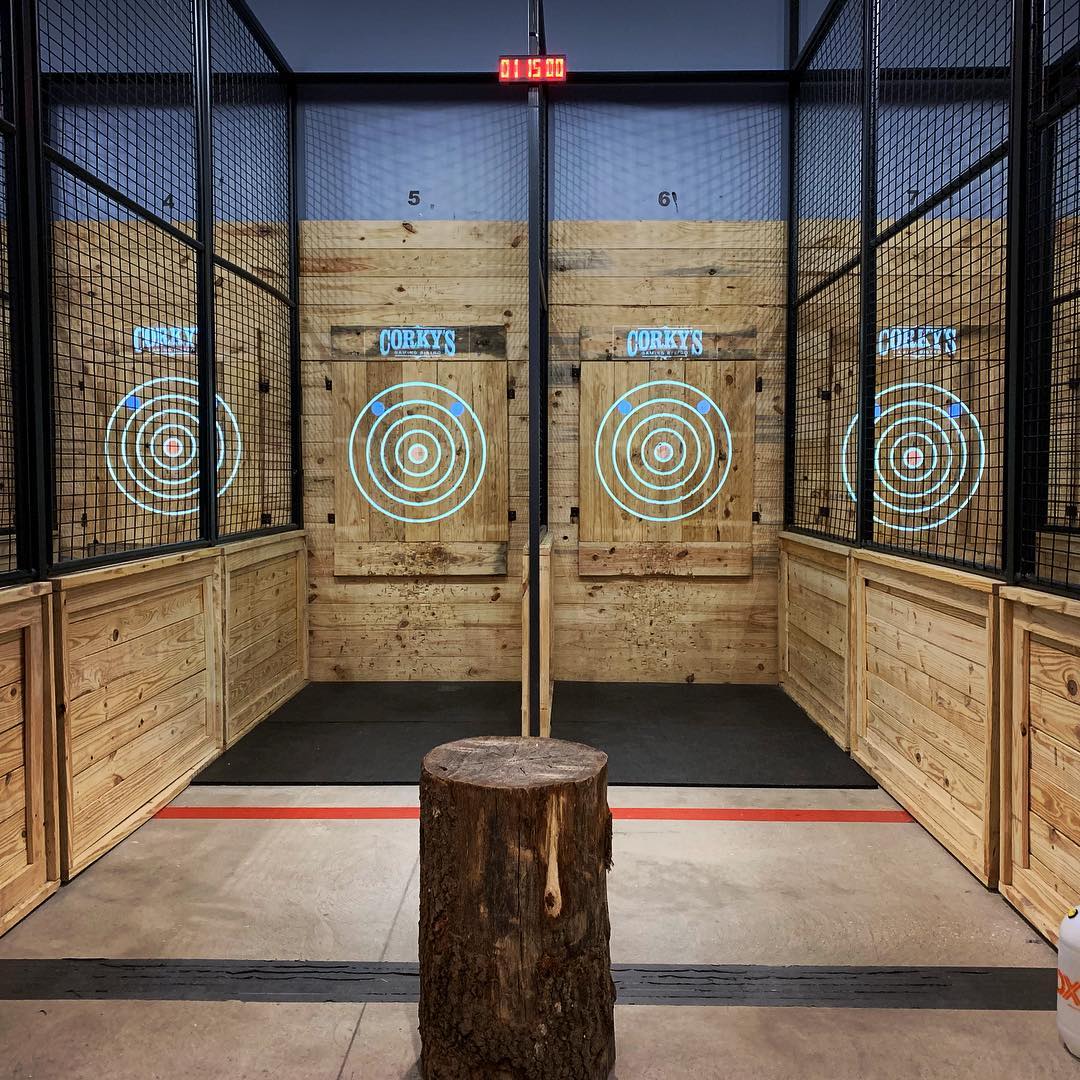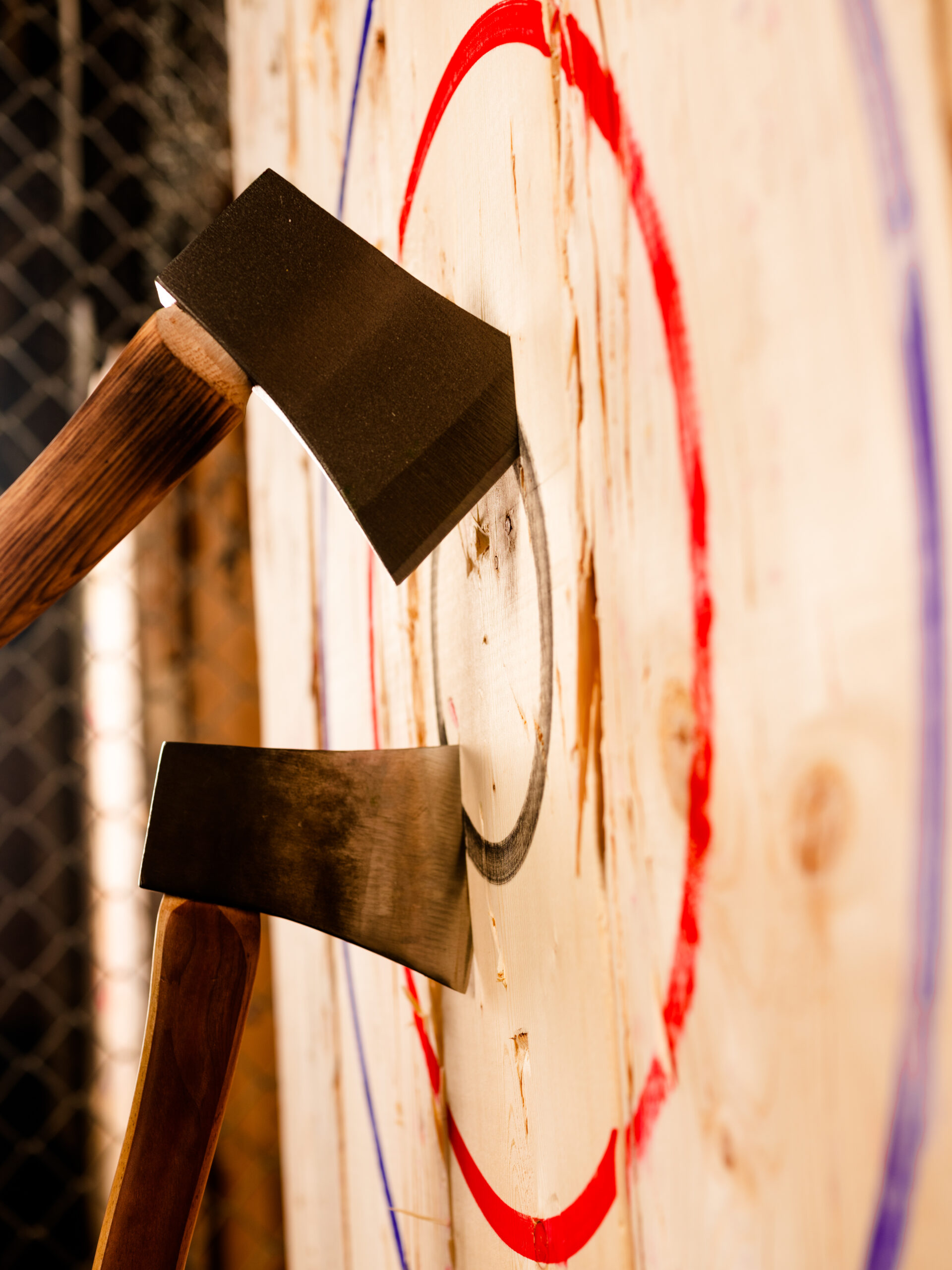Step Up Your Game with Axe Throwing Denver: Master Your Skills Today
Step Up Your Game with Axe Throwing Denver: Master Your Skills Today
Blog Article
The Enjoyable of Axe Throwing: How This Sport Combines Skill and Adrenaline for a Great Time
Axe throwing has actually emerged as a captivating sport that masterfully intertwines the requirement for accurate skill with the thrill of adrenaline, offering participants a one-of-a-kind and appealing experience. The act of tossing an axe in the direction of a target requires concentration and method, simultaneously cultivating an atmosphere of camaraderie and pleasant competition.
The Origins of Axe Throwing
Axe throwing, a leisure task that has gotten considerable appeal in the last few years, traces its origins back to ancient times. This primal sport go back to early human background, when axes were mostly used as tools and tools. The earliest documents of axe usage in affordable contexts are located among the Celts and Vikings, that threw axes for sporting activity in addition to in fight training. The practice was not simply an activity but a vital ability for survival and war.
Medieval European warriors, particularly throughout the Center Ages, exercised axe throwing as part of their martial training. The Francisca, a sort of throwing axe made use of by the Franks, ended up being famous for its lethal precision. This standard weapon was developed to be thrown at opponent shields and shield, showcasing its double energy in both sport and fight.
In more current history, axe throwing saw a revival in the logging camps of North America in the 19th and 20th centuries. Lumberjacks would take part in friendly competition, evaluating their accuracy and stamina by intending at wood targets. This development from a survival skill to a recreational activity has led the means for its modern-day rebirth, with committed locations and leagues currently commemorating the sporting activity worldwide.
Devices You Need
Comprehending the rich background of axe throwing improves the gratitude of the sport's modern model. For competitive and entertainment axe tossing, the most typically used type is the hatchet, usually evaluating between 1.25 to 2 pounds with a take care of length of around 16 inches.
Just as crucial is the target. Regulation targets are built from wood, with softwood selections like ache or cottonwood being preferred for their ability to absorb and hold the axe. The target is generally separated right into five concentric circles, each with a details factor value, to help with rating.
Safety gear, though commonly neglected, is vital. Safety handwear covers can improve grip and stop blisters, while closed-toed footwear are a should to shield feet from gone down axes (ax throwing denver). A well-lit, sizable tossing area, full with safety and security obstacles, guarantees a regulated setting where individuals can concentrate on refining their skills.
Basic Techniques Described
Understanding the fundamental strategies of axe throwing is vital for both safety and effectiveness. The first technique to recognize is the hold. Hold the axe with a firm, yet unwinded hold, similar to holding a golf club. The leading hand should be placed straight listed below the axe head, while the non-dominant hand sustains the end of the manage.
Your dominant foot should be slightly ahead, aligning with your target. This positioning help in preserving security and routing power precisely towards the target.

Safety First
Making certain security in axe throwing is critical to producing an injury-free and satisfying experience. Precaution begin with the location layout. A click over here properly designed axe tossing center attributes clear demarcations in between tossing lanes, sturdy backgrounds to capture roaming axes, and non-slip floor covering to avoid crashes. Furthermore, ample lights is essential to help participants maintain visual precision and spatial recognition.
Benefits of Axe Throwing
Axe throwing offers a myriad of benefits that prolong beyond simple recreation. The repetitive motion of tossing the axe likewise improves hand-eye coordination and great electric motor abilities.
Psychologically, axe throwing needs approach, emphasis, and precision, making it an outstanding method to develop cognitive abilities. The concentration needed to hit the target can function as a form of mindfulness, enabling individuals to clear their minds and minimize stress and anxiety. This mental involvement can be especially helpful in aiding people establish much better analytic abilities and psychological durability.
Socially, axe throwing is typically appreciated in team settings, cultivating team-building and sociability. Whether as component of a business occasion or a laid-back trip with good friends, the sport urges interaction and cooperation. Furthermore, the public experience of finding out and boosting together can reinforce partnerships and develop long lasting memories.
Verdict

The earliest records of axe use in affordable contexts are discovered amongst the Celts and Vikings, that tossed axes for sporting activity as well as in fight training. Launch the axe when your hands are approximately at eye degree, enabling the axe's natural turning to lead it in the direction of the target.
A well-designed axe throwing facility functions clear separations between throwing lanes, strong backgrounds to capture stray axes, and non-slip flooring to avoid mishaps. Individuals must be instructed on the look at this website appropriate method to handle and toss the axe, highlighting regulated, deliberate movements over powerful tosses.
In recap, axe tossing stands out as a sporting activity that read this article masterfully incorporates skill, adrenaline, and accuracy.
Report this page